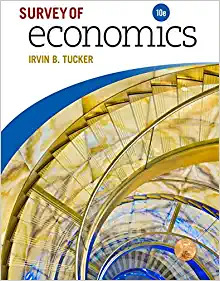Question
1. This question is based on the article, How America's blockbuster stimulus affects the dollar, published by The Economist on March 13, 2021. The article
1. This question is based on the article, "How America's blockbuster stimulus affects the dollar," published by The Economist on March 13, 2021. The article discusses the drivers of the past and potential future trends in the value of the dollar in terms of other currencies. Note that the article mentions changes in "risk appetite" as a driver of exchange rates. By "risk appetite" the article means willingness to hold riskier currencies as opposed to the U.S. dollar, which is considered the safest currency. So, when risk appetite declines, people prefer to hold more dollars and demand higher premia for holding risky currencies. [26 points total for Question 11]
(a)According to the article, how did risk appetite change in March 2020 and how did it affect the dollar's value in terms of other currencies? [6]
(b)According to the article, how did the actions of the Fed help with the situation described in (a)? How did the risk appetite change in the rest of 2020 and how did it affect the dollar's value in terms of other currencies? [6]
(c)The article claims that "the greenback's bounce-back this year is more about interest-rate differentials." Based on the evidence and arguments presented in the article, does the appreciation of the dollar between mid-December 2020 and mid-March 2021 seem to be due to changes in short-term interest rate differentials that already took place or expected changes to interest rate differentials in the future? [6]
Step by Step Solution
There are 3 Steps involved in it
Step: 1

Get Instant Access to Expert-Tailored Solutions
See step-by-step solutions with expert insights and AI powered tools for academic success
Step: 2

Step: 3

Ace Your Homework with AI
Get the answers you need in no time with our AI-driven, step-by-step assistance
Get Started


